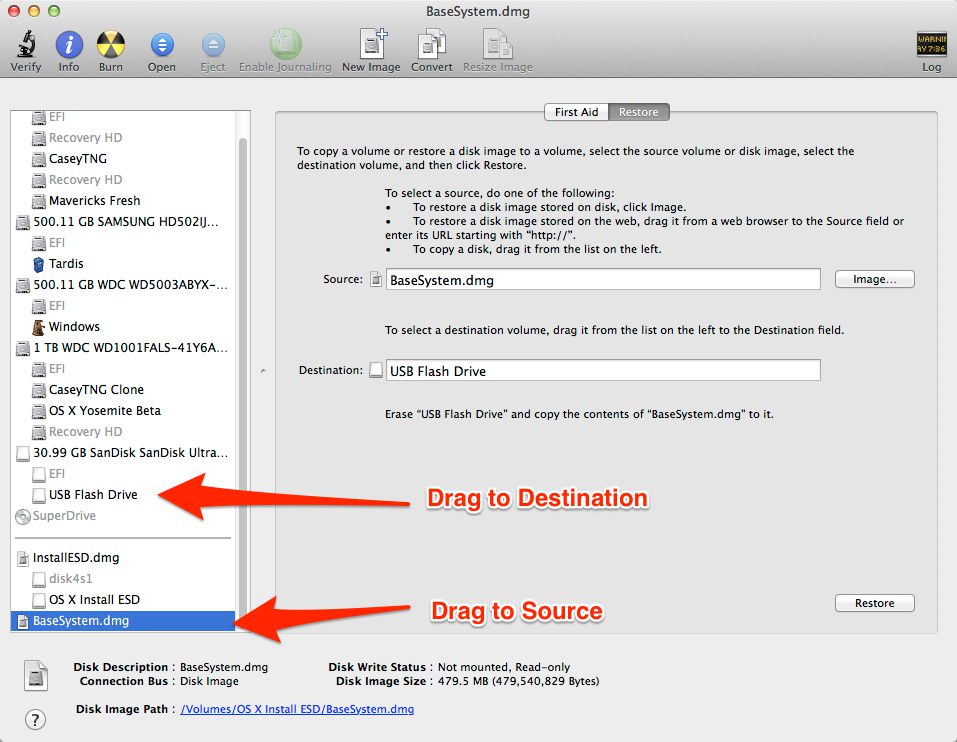Installesd.dmg Disk Utility High Sierra Basesystem
- Installesd.dmg Disk Utility High Sierra Base System Installation
- Installesd.dmg Disk Utility High Sierra Base System Repair
- Installesd.dmg Disk Utility High Sierra Base System For Sale
- Installesd.dmg Disk Utility High Sierra Base System Drive
- Installesd.dmg Disk Utility High Sierra Base System Download
Download macOS high sierra dmg for Hackintosh. This dmg image is converted from the macOS high sierra 10.13.6 app. It is only for building Hackintosh. The dmg already includes clover bootloader, so you can restore the image and install the OS on your pc. 2) Go to Contents SharedSupport and open disk image 'InstallESD.dmg' 3) There is a hidden disk image in there called 'BaseSystem.dmg', to open go to the Terminal and type - open /Volumes/OS X. I was just trying to delete everything and start my Macbook fresh. I tried to re-install OS X Sierra, and it keeps failing. When I go to disk utility under internal, there's no Macintosh HD there's only OS X Base System. Tried to ask Apple Support for help and they first told me to try first aid and that failed. Making a High Sierra USB Installer Entirely From Scratch in Windows This is a proof of concept tutorial, to show its possible to create a vanilla High Sierra installer, entirely from scratch, in Windows (even without App Store downloaded Install macOS High Sierra.app from a real Mac ). Install MacOS 10.13 Beta.App or InstallESD.dmg; boot.efi you can get it from BaseSystem.dmg Before going to Install Kindly take Backup of EFI (Drive) because Apple MBP users reported that after install/upgrade to High Sierra, EFI partition got broken and this method allow you to install MacOS High Sierra in HFS+ but not the APFS.
Installesd.dmg Disk Utility High Sierra Base System Installation
Download macOS
Key Notes: As Apple has decided to not support Sierra on the MacPro 3,1, there needs to be modifications performed to allow Sierra to be installed on the Mac Pro 3,1 This installation guide ONLY applies for the Mac Pro 3,1. I performed these steps on El Capitan - I have no idea if they will. Making a High Sierra USB Installer Entirely From Scratch in Windows This is a proof of concept tutorial, to show its possible to create a vanilla High Sierra installer, entirely from scratch, in Windows (even without App Store downloaded Install macOS High Sierra.app from a real Mac ).
Get FetchMacOS and place it in a known folder.
Open
Command Promptand usecd/bad-santa-2-movie-download.html. to go to the known folder.Run
fetch-macos.exe -p PRODUCTID -o SharedSupportwherePRODUCTIDis the macOS package you want to download.
Edit Downloaded Files

Installesd.dmg Disk Utility High Sierra Base System Repair

Rename
InstallESDDmg.pkginside theSharedSupportfolder toInstallESD.dmgEdit
InstallInfo.plistusing WordPad (or another text editor) and remove thechunklistURLandchunklistidkeys for InstallESD as well as renameInstallESDDmg.pkgtoInstallESD.dmg(example here)
Installesd.dmg Disk Utility High Sierra Base System For Sale
Write BaseSystem to USB
Format the USB drive using Boot Disk Utility. Select
DLandSave after DLfor Clover Bootloader Source,Cloverfor Format Options, and a200MB Boot Partition Sizefor Multi PartitioningExtract
4.hfsfromSharedSupportBaseSystem.dmg--> save to it's local folderRestore
4.hfsto the USB's second partition ---> 2nd partition becomes bootable 'OS X Base System'
Resize BaseStstem USB Partition
Open Paragon Partition Manager Free and resize the second partition of the USB drive to the full size allowed. Don't forget to apply the changes at the end.
Installesd.dmg Disk Utility High Sierra Base System Drive
Copy Additional Data
Installesd.dmg Disk Utility High Sierra Base System Download
Open TransMac and navigate to the
HFS+ Volume/Install macOS High Sierra.app/Contentsfolder. Right click anywhere in the empty space on the RHS pane and selectCopy Here.In the next stage, select the
SharedSupportfolder we created earlier as theFiles and Folders to be copied to the Mac Volume.